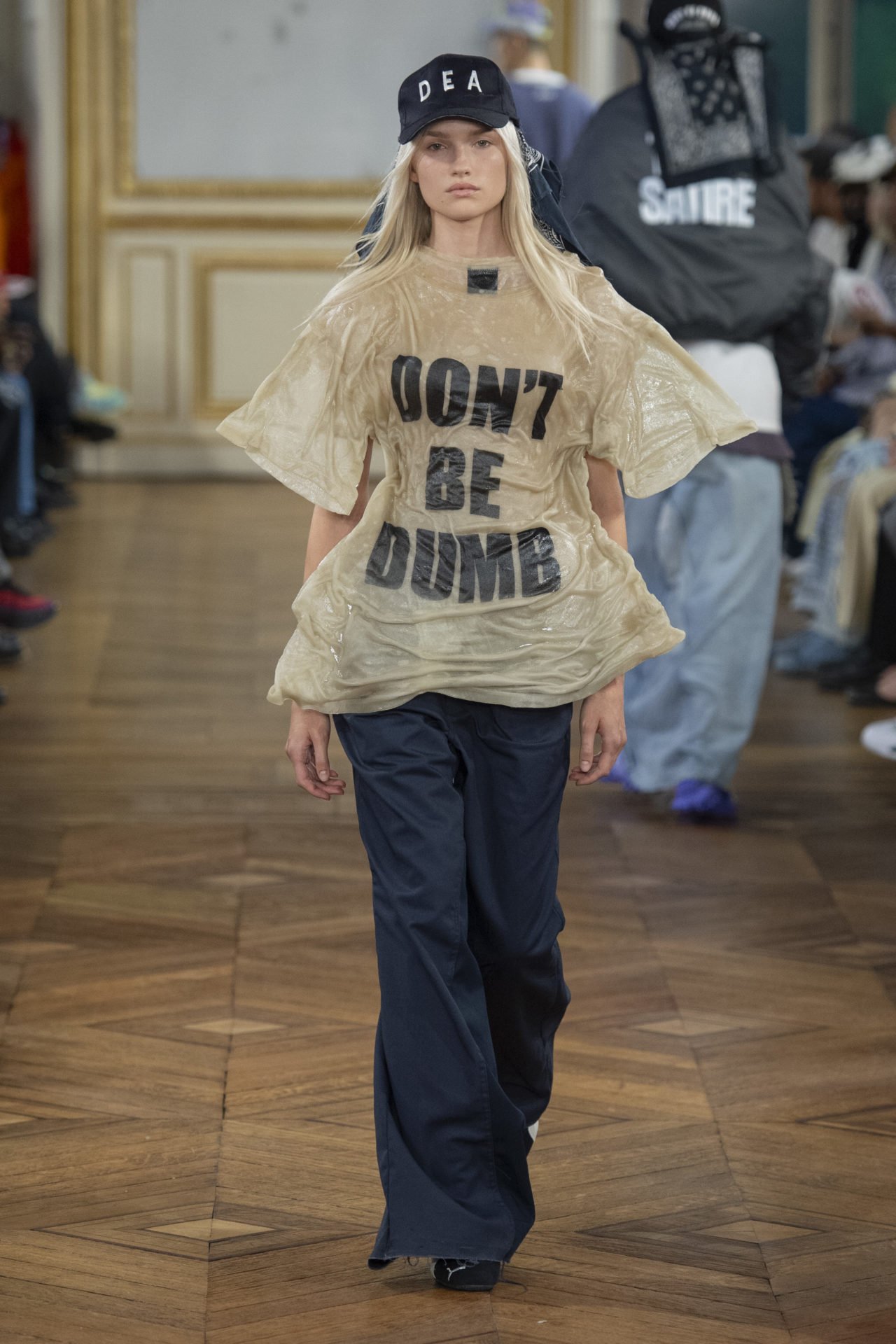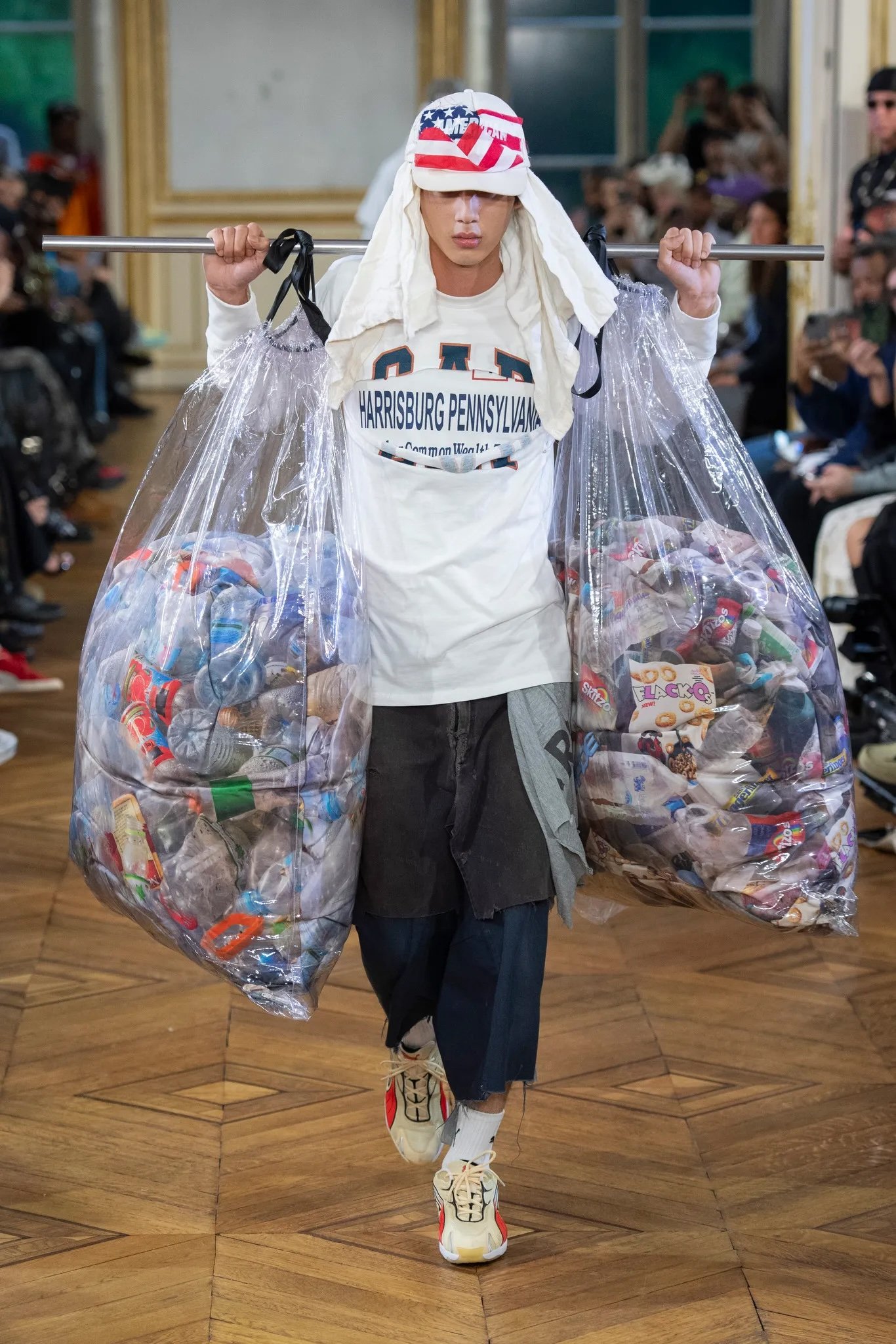Fashion Killa
Land of the free, home of the brave — the American Dream paints a one-size-fits-all fantasy of success. Debuting at Hôtel de Maisons in Paris, American Sabotage is A$AP Rocky’s fashion debut, redefining resilience and activism. Drawing parallels between homelessness and politics, A$AP Rocky has intertwined opposing characteristics of American life, displaying their cyclical coexistence. Inspired by German Expressionism and ghetto futurism, American Sabotage can hardly be confined into a singular category as its imaginative mélange builds upon self-reflection principles. Though clothes are the medium for A$AP Rocky’s vision of American Sabotage, understanding his message requires an extension of the typical observance of clothes.
Gaining influence as a rapper from Harlem, Rocky’s personal beliefs regarding the exclusivity of the American dream took flight through his lyrics and personal fashion choices before he began as a designer. His album cover of the upside-down American flag demonstrates his continuous use of art and music to question the legitimacy of the American Dream. Rocky explains, “Those flags are upside down because our world is upside down. We’re just trying to be understood.” Rocky’s bold statements incite actual change as he urges that gasoline is the only way to fight the fire. Societal issues are not a new topic on the runway, and many designers often allude to real-world adversity. From garments resembling trash bags to props of legitimate trash bags, Rocky’s designs are certainly more blatant than previous activism on the runway.
German Expressionism, an artistic movement highlighting inner emotions over external reality, sets the tone for Rocky’s collection as it grants viewers a glimpse into the life of A$AP. Additionally, combining ghetto futurism with German Expressionism’s unconventional, bizarre aspects birthed a creative explosion. Rocky explains his muse was human existence and drafted ideas during his observation of pedestrians in New York who had bountiful, diverse livelihoods. His collection, in both design and message, captures the essence of New York—a city where opulence and homelessness collide on the same street corner. His designs' utter honesty expresses his definition of the American dream, which Rocky recounts as more of an American horror story. This collection showcases a plethora of issues within our capitalist society, such as obesity, mass incarceration, immigration laws, poverty, and more.
Critics of A$AP Rocky’s collection observe a lack of critical thinking and a surface-level message. People are bothered by the accessibility of his message, claiming there is a lack of attention to detail. However, his intention intends to be heard by the masses, synonymous with other forms of everyday social activism, such as street protests. Rap music embodies bold emotion, while streetwear brings unapologetic rawness — American Sabotage is the perfect emulsion of the two elements. Within the fashion world, fashion collections are often only understood by a niche group capable of artistic debunking. However, protests are quite the opposite, utilizing memorable taglines and leaving no question of the meaning behind the movement. American Sabotage pays homage not only to historical protests within America, but it’s the incorporation of maximalism and bold silhouettes, creating a statement of desperation to be seen and heard. The simplicity of his designs and message is a uniquely built bridge between high fashion and average American problems.
American Sabotage is not a thoughtless brand stretch but a meaningful manifestation of the lifelong experiences of A$AP Rocky. Simplicity is used as an advantage to cut through the political noise of corruption and negligence, bringing the spirit of protest to high fashion. Rocky masterfully blurs the lines between fashion, music, and activism, transforming the runway into a platform for social commentary. As both a symbol of protest and a bold fashion statement, it calls for a collective reevaluation of what it means to succeed and be seen in a world that often overlooks the most marginalized.
Strike Out,
Writer: Isabelle Kim
Editor: Dani Hernandez
Graphic Designer: Rafael Lisboa
Tallahassee




